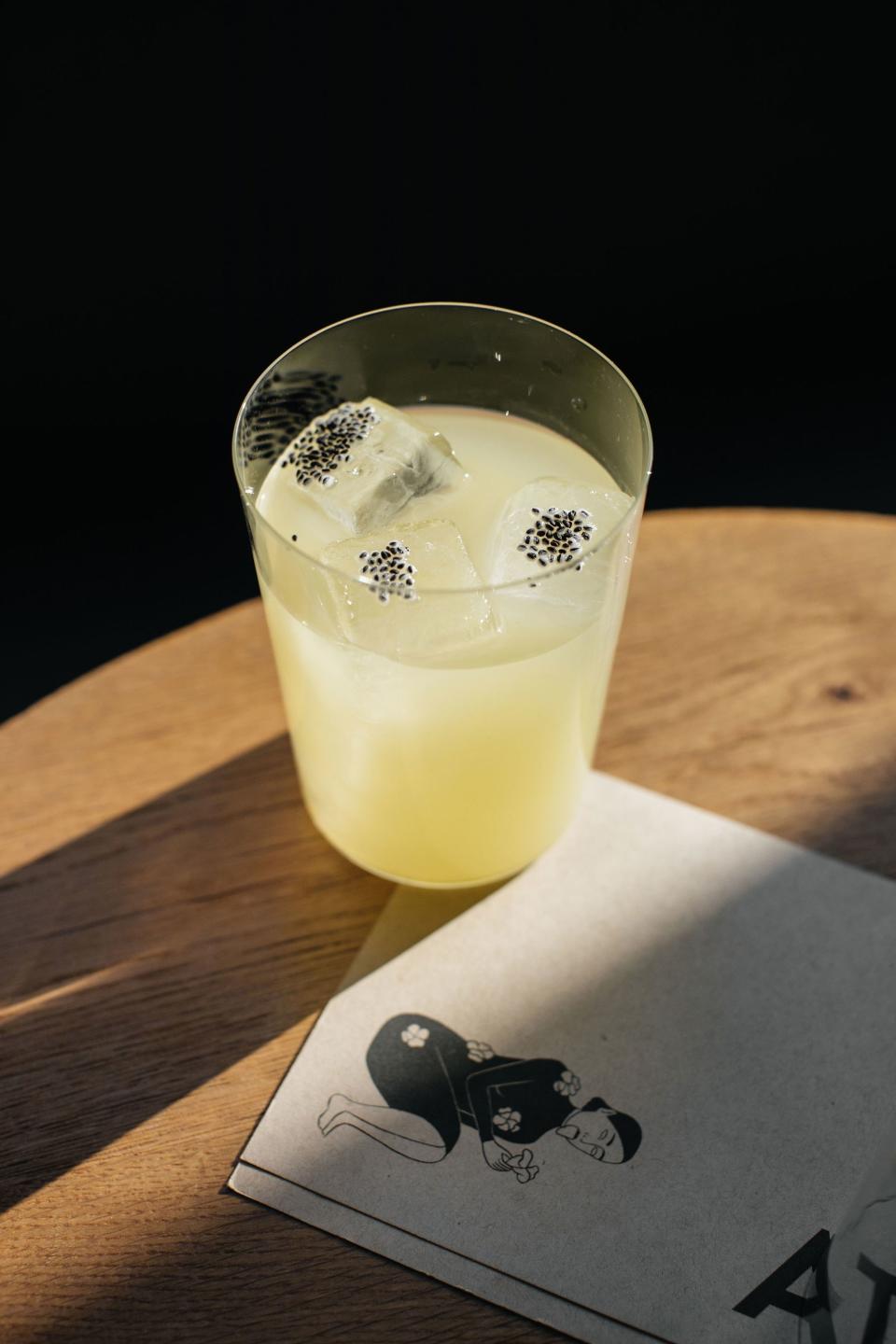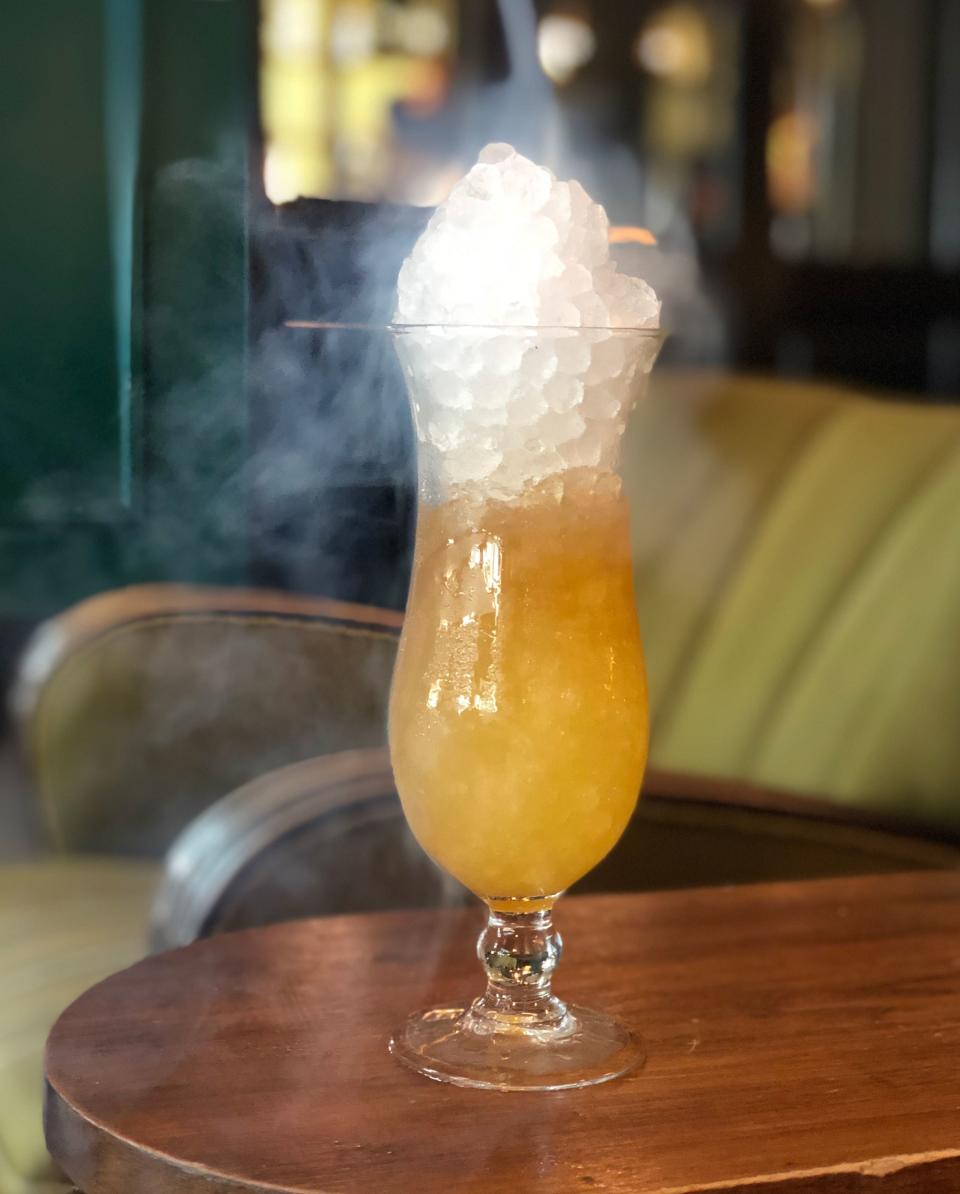Palo Santo: The Mystical Peruvian Wood Now Aromatizing Food and Drink
“Sorcery—which palo santo is traditionally associated with—is in vogue,” proclaims Yana Wolfson, beverage director of New York’s Mexican café, ATLA. Since last spring, Wolfson has served a cucumber-yuzu agua fresca made with a palo santo-infused water. Wolfson is one of the many chefs and bartenders who are looking back to move ahead by “sourcing and celebrating ingredients of the past,” of which palo santo is one. Native to South America and Mexico, the wood is prized for its antibacterial properties and inviting citrusy-pine aroma, and was once burned during ancient ritualist ceremonies in Ecuador and Peru. Lately, it’s begun to appear in beauty products—one of the first brands to embrace it was natural haircare brand Rahua, whose founder Fabian Lliguin explains that as a hairdresser of Inca descent, he’s been familiar with the wood since childhood, prizing the wood for its medicinal benefits and mysterious aroma. Now, palo santo is making its way onto restaurant and bar menus.
“Palo santo was burned by the Manteños, in the Manabí region of Ecuador,” explains Sacred Wood Essence founder Erik Suarez, referencing the country’s pre-Columbian civilization that dates back to circa 850 CE, one of the earliest known records of palo santo use. “There is evidence of it being burned in ceramic bowls, most likely during ceremonies or rituals.” According to Ecuadorian history, when the Spanish arrived to the country around 1500, they discovered the tree’s myriad health benefits—its antibacterial and anti-inflammatory properties, and its ability to treat respiratory ailments, among others—and so they named it palo santo, which translates to holy wood in Spanish.

After learning about palo santo through a friend and becoming intrigued by its intoxicating aroma, in 2008 Suarez began selling palo santo essential oil at music festivals. Over the last decade-plus, he’s grown his company into one of the largest U.S. sellers of palo santo by volume, with much of his sales coming from the West Coast—also a hotbed for palo santo-infused drinks.
Last year, bar director Yael Vengroff of Los Angeles’s Spare Room updated the venue’s longstanding tequila cocktail, The Sandpiper, by infusing the base spirit with palo santo wood. Vengroff felt the tree’s woodsy-lemony taste would match the drink’s complementary flavors of spiced pineapple and cardamom. She explains that, in her drink, palo santo functions similarly to ”the way bitters work in many classic cocktails,” by uniting flavors without overpowering them.
Meanwhile, two months ago at Downtown L.A.’s Broken Shaker, Bar Manager Christine Wiseman threw Woke AF onto the neo-tiki bar’s menu. But rather than infuse palo santo into a spirit, she sources a palo santo essence from roving cocktail bar Road Soda. Initially keen to highlight botanicals in Fords Gin, her drink evolved into an elderflower liqueur and white vermouth-laced martini variation. Wiseman says the palo santo “enhances the botanicals of the gin, and gives it a stronger backbone.”
In Denver, Latin eatery Señor Bear has built versions of The Peruvian Apocalypse since last summer, using a base mixture made from grated palo santo wood, nutmeg, and Angostura Bitters, served in a tiki glass with a flaming palo santo stick. Inspired by the wood’s medicinal properties, bar manager Keegan Labrador explains that he first heard of palo santo from his Ecuadorian wife's mother, who used to prepare palo santo tea to soothe upset stomachs.
Also partial to palo santo as a garnish, Matt Ray, beverage director of New Orleans’ Ace Hotel, preps brown-spirited King Tuts, a brandy and rum drink flavored with banana and ginger, garnished with flaming palo santo bark.

A number of U.S. distilleries, like Chicago distillery Letherbee, and New York’s Matchbook Distilling Co, are experimenting with adding the wood’s flavor to spirits, too. Last fall when Letherbee released its limited edition Autumnal Gin, one of the liquor’s primary botanicals was palo santo; specifically fresh sage steeped with palo santo smoke. Over at Matchbook Distilling, customers can create their own custom-blended booze via a selection of 50 botanicals, including a palo santo distillate.
And while many cross-country restaurants are mixing and muddling palo santo into drinks, some bars are infusing palo santo into foods. When Chicago’s Ludlow Liquors launched just over a year ago, chef Nick Jirasek tested out a palo santo-infused veggie eggroll, filled with palo santo-curried potatoes. Since then, the dish has evolved into a set of vegetarian samosas with a filling of potatoes mixed with coconut milk that Jirasek steeps with palo santo shavings and black cardamom.
Sacred Wood Essence’s Suarez says that he, like many others, sources his palo santo wood from Ecuador, and because of the sustainable way in which one must procure the wood, it’s not in danger of becoming extinct. “We work with a small family in Ecuador...they have special permission to collect dead fallen trees from the protected dry tropical forests of the Central Coast” to harvest palo santo wood, Suarez explains. In fact, aromatic palo santo wood can only be cut from dead trees or branches. A live tree, freshly cut, wouldn’t produce any aroma. The tree must die on its own, then dry for at least four years, enabling its internal sap to crystalize.
Suarez admits he’s a bit surprised to learn that palo santo has become a chic ingredient in a new spate of cocktails and bites. But he’s not new to the concept of it as an edible: “I chew on sticks all the time,” he says, “...to clean my teeth!”
Originally Appeared on Vogue

